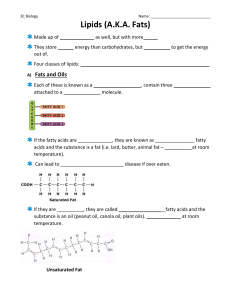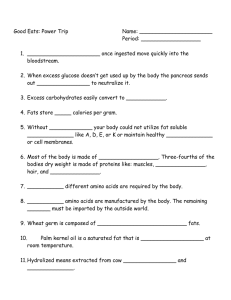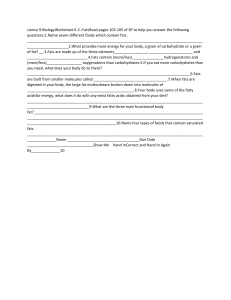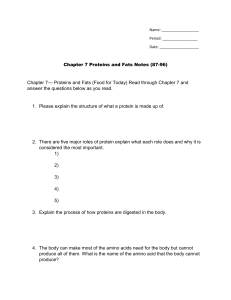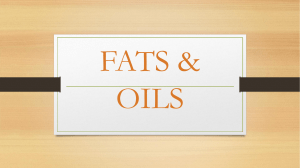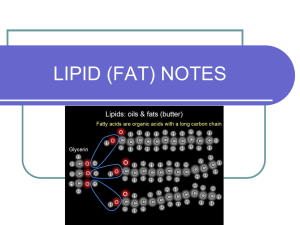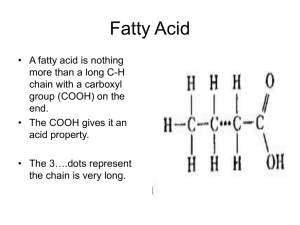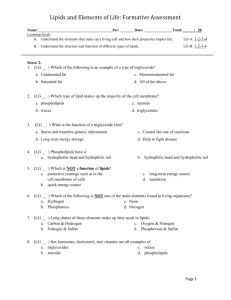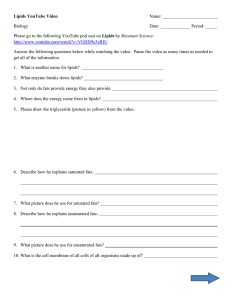start delta dart construction reach step 18
advertisement
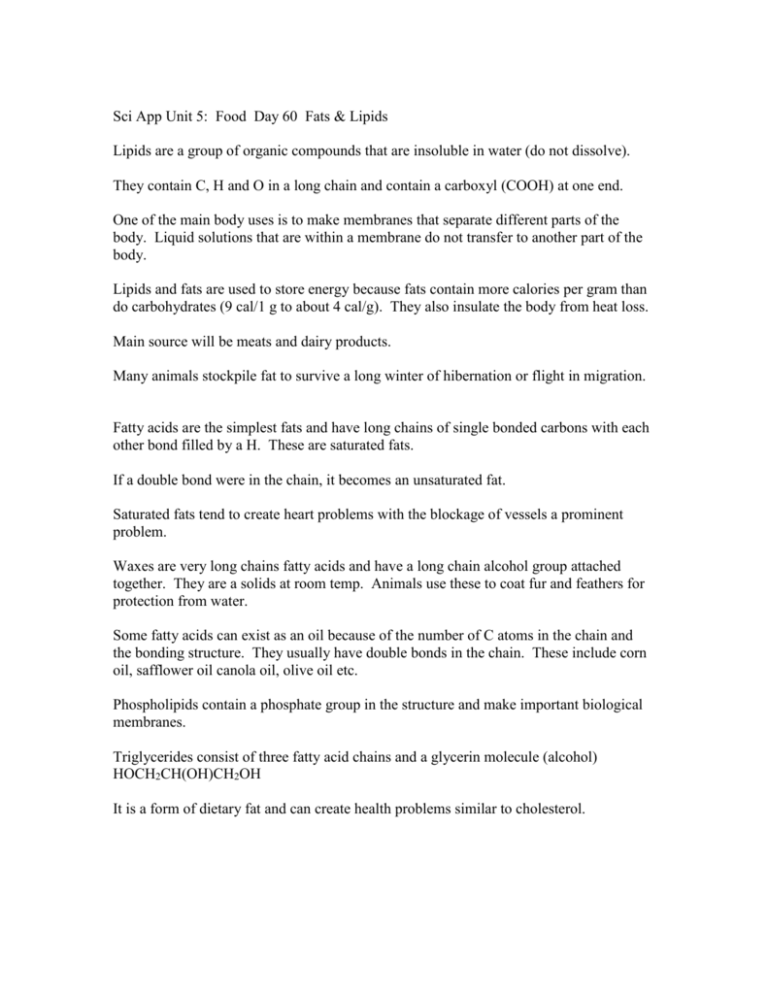
Sci App Unit 5: Food Day 60 Fats & Lipids Lipids are a group of organic compounds that are insoluble in water (do not dissolve). They contain C, H and O in a long chain and contain a carboxyl (COOH) at one end. One of the main body uses is to make membranes that separate different parts of the body. Liquid solutions that are within a membrane do not transfer to another part of the body. Lipids and fats are used to store energy because fats contain more calories per gram than do carbohydrates (9 cal/1 g to about 4 cal/g). They also insulate the body from heat loss. Main source will be meats and dairy products. Many animals stockpile fat to survive a long winter of hibernation or flight in migration. Fatty acids are the simplest fats and have long chains of single bonded carbons with each other bond filled by a H. These are saturated fats. If a double bond were in the chain, it becomes an unsaturated fat. Saturated fats tend to create heart problems with the blockage of vessels a prominent problem. Waxes are very long chains fatty acids and have a long chain alcohol group attached together. They are a solids at room temp. Animals use these to coat fur and feathers for protection from water. Some fatty acids can exist as an oil because of the number of C atoms in the chain and the bonding structure. They usually have double bonds in the chain. These include corn oil, safflower oil canola oil, olive oil etc. Phospholipids contain a phosphate group in the structure and make important biological membranes. Triglycerides consist of three fatty acid chains and a glycerin molecule (alcohol) HOCH2CH(OH)CH2OH It is a form of dietary fat and can create health problems similar to cholesterol.
